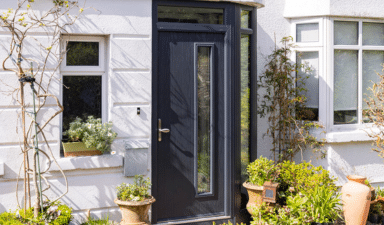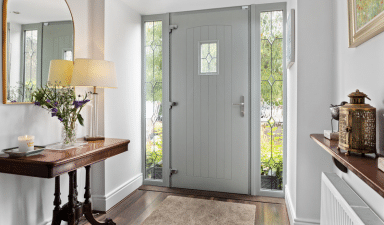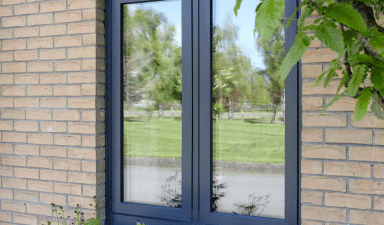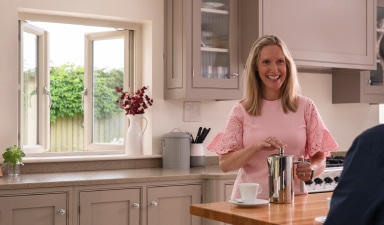Home FAQs
FAQs
FAQs
Select from the following list of Product, Service and Technical FAQs. Browse through these FAQs to find answers to commonly asked questions. If your question is not listed or you need further assistance, we’ll be happy to help at freephone 1800 31 31 32
If I have a problem with any of my products from day 1 to 15-20 years, what do I do?
If you experience a problem with your Global products, freephone 1800 31 31 32 and ask for the Customer Service Department. They will arrange for a service engineer to come out to your home at a time convenient to you.
When calling, please state your Contract Number (e.g. 23000) if you have it with you at the time of calling. You can find this on your invoice, guarantee certificate or Global 365 Emergency Assist card.
You will not be charged for this service call out. Materials and labour are included.
What do I do if I am locked out, have a break-in or my property is insecure and it is out of hours, for example, at the weekend or in the middle of the night?
We are on call 24/7, 365 days of the year - even on Christmas Day.
In the event of an emergency, just call Global on Freephone 1800 31 31 32.
Please quote your contract number from your Global Emergency Assist Card. We will respond as fast as possible and call out to your home. We will fix your problem or arrange repairs for another day. Whatever the emergency, we will endeavour to leave your home secure.
Why does condensation occur?
Water vapour from kitchens, bathrooms, gas or paraffin heaters and even indoor plants can contribute to condensation. In older buildings, low indoor temperature and badly positioned radiators can cause problems. Modern draught-free insulated houses don’t have the same natural ventilation and air circulation of older houses.
Where condensation occurs on glazing
Condensation on the room side of the glass: the glass surface is too cold given the water vapour content of the room. Increasing the temperature or opening a window should help. Condensation in the cavity of a sealed glass unit means the seal has broken. Contact Global Customer Services on Freephone 1800 31 31 32.
External condensation on the outer pane
Surface condensation will appear on the outside of insulated glazing if the temperature on this face of the glazing is significantly lower than the external air temperature and if the temperature of the glass is lower than the dew point (the temperature at which water vapour becomes liquid) of the external air.
The surface temperature on the outside of the glazing is dependent on:
- The heat flow from the interior passing through the glazing. This depends on the difference in temperature between the internal surface and the external surface of the glazing and the energy efficiency of the glass unit.
- The exchange, by convection, with the external air.
- Heat loss by radiation mainly to the sky. Various studies and measurements carried out show heat exchange by radiation is relatively limited in overcast weather. However, when the sky is clear at night, there are significant heat losses to the sky.
- Avoid drying wet clothes inside if possible.
- Ensure all rooms are vented.
- Position radiators under windows and keep curtains at least 15-20cm clear of glass for free movement of air.
- Open windows for a few minutes each day to permit air changes.
- After a bath or shower, close the internal door and open a window for a few minutes.
- When cooking, close the internal door and open a window if possible.
- Install extraction fans in kitchens or bathrooms if you have persistent problems.
- In conservatories, trickle ventilation in the wall, eaves and ridge zone can help.
We recommend you arrange to have your roofline gutters swept or cleaned out at least once a year, particularly if you have nearby trees that could be dropping leaves into the gutters.
As with all our other PVC products, Global fascias, soffits and gutters are low-maintenance and can be cleaned with a soft cloth using warm water & washing up liquid.
Any internal timberwork can be finished and treated in the same way as any other internal timberwork in your home.
Where window boards (internal sill boards) have been replaced they can either be stained or painted, depending on your choice from room to room.
Doors, for example, would regularly be finished internally with architraves and timber liners. Most people then paint these to match skirting boards and other architraves, but the choice is yours.
It should be remembered that all such decoration is not part of the contract and is the responsibility of each individual homeowner.
To keep your Global windows and doors looking great, clean the PVC or Composite / Glass Reinforced Plastic (GRP) sections once a month or so with warm water and a squirt of washing up liquid, using a non-abrasive sponge or cloth.
Glass can be cleaned in the same way, but we recommend drying the surface afterwards with an old newspaper to help remove streaks. Proprietary glass cleaning products may also be used, but please ensure the frames are washed down as described above to ensure no residues are left.
Once or twice a year, lightly lubricate the handles and other hardware items using a product such as WD40.
Open your windows and doors at least once a month to keep them operating at their best.
To lock your new Global door
- Close the door, engaging the latch.
- Lift the handle up fully.
- Insert the key and turn one full revolution – anti-clockwise where the handle is on your left hand side and clockwise where the handle is on the right hand side.
- Insert the key and turn one full revolution. If the handle is on the left hand side, turn the key clockwise one full revolution and anti-clockwise if on the right.
- Push the handle down fully
- Turn the key once more as far as it will go until it releases the latch and the door will open. For a handle on the left hand side, turn clockwise.
The window opening sash can be set to a ventilation position and still remain partially locked. This facilitates night time ventilation, whilst maintaining security.
- Open out the window sash by about 20mm (just under 1 inch).
- Place your fingers against the rubber gasket and slowly pull the sash in until it just touches the fingers. Take care to do this gently so you do not injure your fingers.
- Then close the handle and you should feel the locks engaging.
- You will know if it is engaged by trying to push the window open. If it doesn’t move it is correctly engaged on the vent setting.
Handles: Our installation team will have given you the keys for the handles. The keys are universal and one key can open/lock all window handles in place. All bedroom handles are non-locking and have cover caps on the key entry section of the handle for safety reasons.
Please note: The key lock only locks the handle in position: the window itself is locked by the movement of the handle. When a handle is locked, it prevents the handle being opened. This is why their use is prohibited in bedrooms.
To lock a window handle: Insert the key into the keyhole and turn ½ of one revolution. The handle is now fully locked. To unlock, simply turn the key in the reverse direction.
Yes, we fit a range of cat flaps to suit different situations.
Yes, our consultant will explain all details like this to you when they call out.
Yes we do, but it must be linked to windows or doors that we are installing. In other words, if you want a window or door opening made bigger or smaller or you require a concrete lintel, step, concrete bases etc, we can do this as we have our own engineers and in-house expertise.
Our guarantee is completely free of charge and covers specified products for up to 20 years. We also provide a 10 year security guarantee with all of our windows and doors. This is backed by our free Global 365 Emergency Assist service, available 24/7 365 days a year.
We only supply and fit as our installation system is an integral part of our overall product performance and can only be fitted by Global trained installers. Furthermore, as our guarantee covers installation, it would not make sense to buy the product only. We can not guarantee supply only as we would not be installing, and installation is crucially important.
We don’t supply any of our products to other companies or third parties.
Every Global product is made-to-measure, custom-made and individually tailored to suit your home, budget and requirements. We don’t like guessing or giving rough prices as home improvements are a big investment. In our experience, it works best that our design consultant calls out to your home at a time that suits you to provide you with a design consultation and a free accurate quotation, without any obligation to buy.
A deposit of one third of the overall cost is due, to be paid by cheque or credit card, and the balance is due when the work is completed. No in between payments with Global.
No order is too small for Global. We call out for one window or one door. Whatever your requirements, we will attend to it.
Yes, we install a wide range of home improvement solutions including roofline, fascia and soffit and flat roofs.
We only service our own products as our product specifications are exclusive to Global.
Your bedroom windows have fire escape openings which are designed to ensure safe escape in case of fire. These windows are also fitted with a restrictor which limits the opening of the window to less than 100mm or 4 inches. This restrictor is fitted to ensure that small children cannot open the window fully and are protected from falling out of the window.
It is important that you make sure all occupants are familiar with these restrictors and can release them in case of an emergency.
To release the window restrictor
It is important that you make sure all occupants are familiar with these restrictors and can release them in case of an emergency.
To release the window restrictor
- Open the window sash fully as far as it will go
- Pull the window sash back in slightly – (1/2 inch or 10-12mm)
- Push down on the restrictor arm and pull inwards. This releases the restrictor and allows you to open the window sash fully. When you close the window sash the restrictor will automatically engage.












































